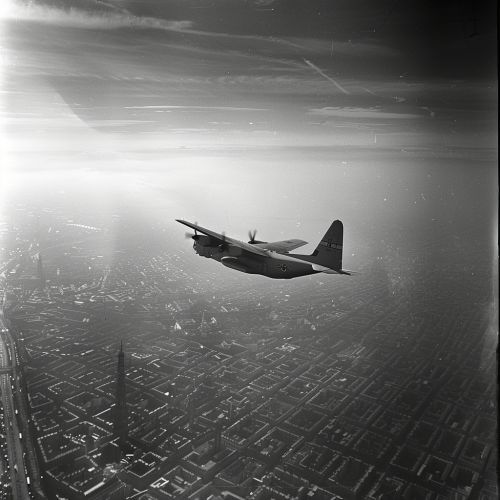Berlin Airlift
Background
The Berlin Airlift was a major event in the early stages of the Cold War, a period of geopolitical tension between the Soviet Union and the United States and their respective allies. Following the end of World War II, Germany was divided into four zones of occupation, each controlled by one of the victorious Allies: the United States, the United Kingdom, France, and the Soviet Union. The city of Berlin, located deep within the Soviet zone, was similarly divided.


Origins of the Crisis
In June 1948, the Soviet Union blocked all ground access to West Berlin, effectively isolating the city from the rest of non-Soviet occupied Germany. This was in response to the introduction of a new currency, the Deutsche Mark, by the Western Allies in their zones of occupation, a move that the Soviets viewed as a threat to their control over Germany. The blockade left the approximately two million residents of West Berlin without access to food, fuel, and other essential supplies.
The Airlift
In response to the blockade, the Western Allies initiated the Berlin Airlift, also known as Operation Vittles and Operation Plainfare. The operation involved the transportation of supplies to West Berlin by air, bypassing the Soviet blockade. The airlift began on June 26, 1948, just two days after the start of the blockade, with American and British military aircraft delivering food, coal, and other supplies to the city.
Operation Vittles
The American operation, known as Operation Vittles, was initially based at airfields in the American zone of occupation in West Germany. The operation was later expanded to include airfields in the British and French zones. The aircraft used in Operation Vittles included the Douglas C-47 Skytrain and the larger Douglas C-54 Skymaster. The latter was capable of carrying larger loads and became the primary aircraft used in the airlift.
Operation Plainfare
The British operation, known as Operation Plainfare, was based at airfields in the British zone of occupation. The aircraft used in Operation Plainfare included the Avro York, the Handley Page Halifax, and the Short Sunderland. The latter was a flying boat that was used to transport goods across the waterways of northern Germany.
The Candy Bomber
One notable figure during the airlift was American pilot Gail Halvorsen, also known as the "Candy Bomber". Halvorsen began dropping candy attached to parachutes to the children of West Berlin, a gesture that became a symbol of hope and goodwill during the crisis.
End of the Airlift
The airlift continued for over a year, with the Western Allies delivering over 2.3 million tons of supplies to West Berlin. The Soviet Union lifted the blockade on May 12, 1949, but the airlift continued until September 30, 1949, to build up a surplus of supplies in West Berlin. The Berlin Airlift was a significant victory for the Western Allies and marked a turning point in the Cold War.
Impact and Legacy
The Berlin Airlift had a significant impact on the early stages of the Cold War. It demonstrated the resolve of the Western Allies to resist Soviet aggression and marked the beginning of a policy of containment of Soviet expansion. The airlift also had a profound impact on the people of West Berlin, who were deeply grateful for the efforts of the Western Allies. The event is commemorated in Berlin with several monuments, including the Luftbrückendenkmal (Air Bridge Monument) and the Berlin Airlift Memorial.
